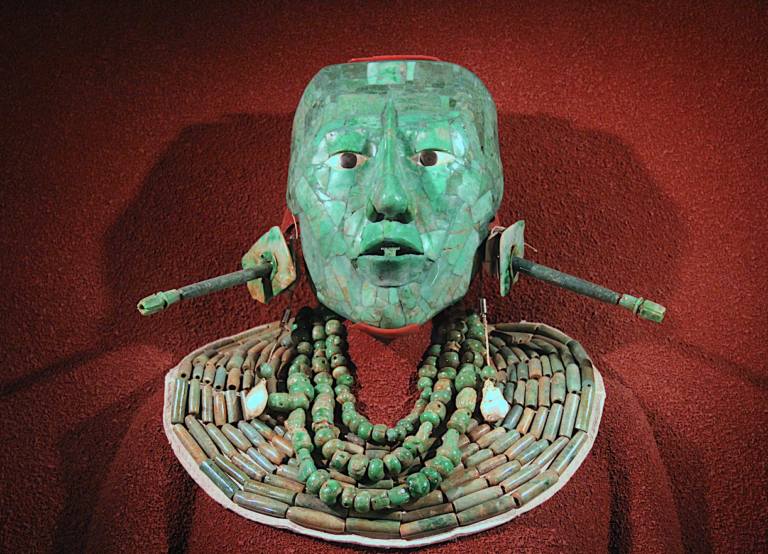The Maya civilization, with its iconic pyramids, intricate writing, and rich culture, has long fascinated scholars and the public. Within this ancient Mesoamerican society, one figure stands out as a legendary ruler – Pakal the Great, the 7th-century ajaw (king) of Palenque. In 1952, an extraordinary archaeological find in Palenque’s Temple of Inscriptions uncovered Pakal’s intricately carved jade death mask, shedding new light on this influential and long-reigning Maya ruler. The discovery of this stunning funerary artifact captivated the world and sparked deeper exploration of Pakal’s life, reign, and enduring legacy.
The Rise of Pakal the Great
Pakal the Great, also known as K’inich Janaab’ Pakal, was born in 603 CE and ascended to the throne of Palenque in 615 CE at the tender age of 12. Despite his young age, Pakal would go on to become one of the most influential and long-reigning rulers in Maya history, presiding over the kingdom of Palenque for nearly 70 years until his death in 683 CE.
During his extensive reign, Pakal oversaw a period of remarkable prosperity and cultural flourishing in Palenque. He commissioned the construction of numerous impressive architectural structures, including the renowned Temple of Inscriptions, which would later house his elaborate funerary chamber and the discovery of his iconic jade death mask.
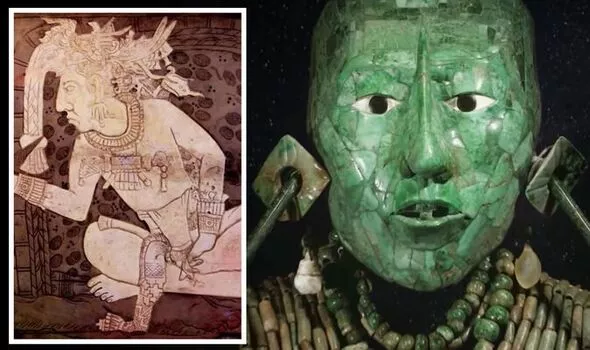
Pakal’s reign was marked by a series of strategic military victories and diplomatic alliances that helped solidify Palenque’s position as a powerful force within the Maya world. He forged alliances with neighboring city-states, expanded Palenque’s territorial influence, and engaged in trade networks that brought wealth and resources to the kingdom.
Pakal’s success as a ruler was not solely due to his military and political acumen, but also his deep understanding of Maya religion, mythology, and the complex calendar system that was central to the civilization’s worldview. He was an accomplished scribe and scholar, leaving behind a rich legacy of inscriptions and artistic works that provide invaluable insights into the Maya’s sophisticated intellectual and cultural traditions.
The Discovery of Pakal’s Jade Death Mask
In 1952, a team of archaeologists led by the renowned Mexican archaeologist Alberto Ruz Lhuillier made a groundbreaking discovery in the Temple of Inscriptions in Palenque. After years of meticulous excavation, they uncovered the elaborate funerary chamber of Pakal the Great, which had remained largely undisturbed for over a millennium.
The centerpiece of this remarkable find was Pakal’s sarcophagus, an intricately carved stone coffin adorned with intricate glyphs and imagery. But the true jewel of the discovery was the exquisite jade death mask that adorned Pakal’s face, a testament to the sophistication and artistry of the Maya civilization.
The jade mask, measuring approximately 12 inches in length and weighing nearly 10 pounds, is a masterpiece of Maya craftsmanship. Carved from a single piece of jade, the mask features a serene, almost life-like expression, with delicate features and intricate details that capture the essence of Pakal’s regal countenance.
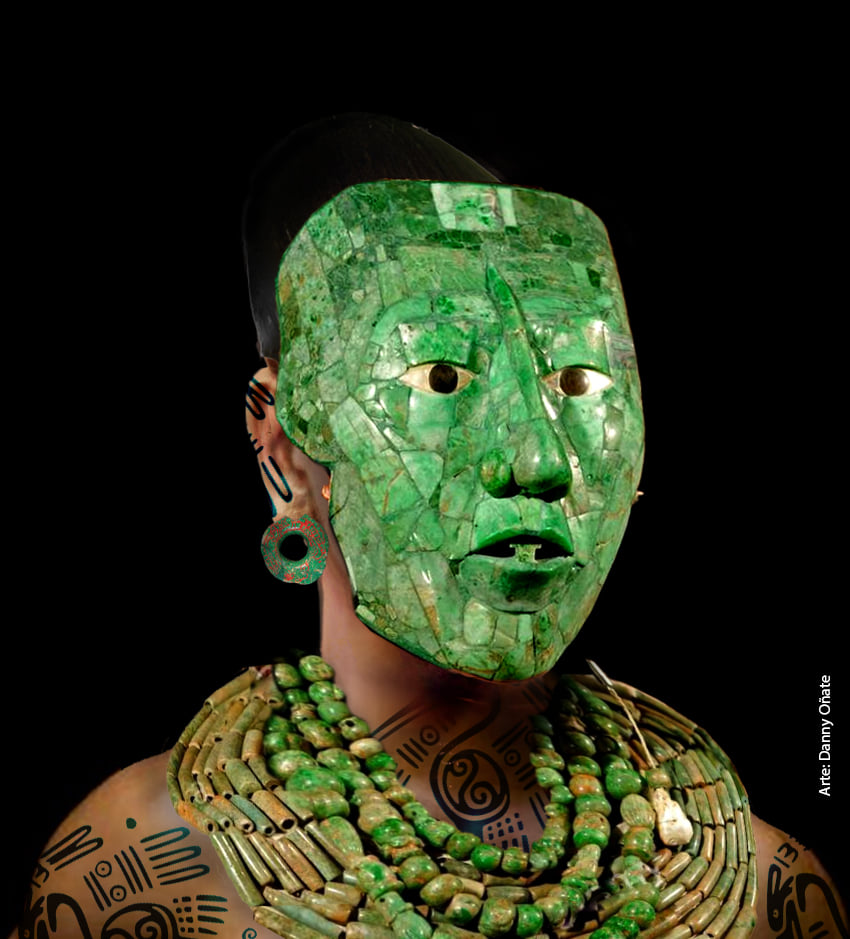
The mask’s design is a remarkable blend of realism and symbolic representation, reflecting the Maya’s deep reverence for the natural world and their belief in the interconnectedness of the physical and spiritual realms. The mask’s eyes, for instance, are inlaid with mother-of-pearl, creating a mesmerizing effect that seems to imbue the artifact with a sense of life and animation.
The discovery of Pakal’s jade death mask was a transformative moment in the study of Maya civilization, shedding new light on the cultural and religious practices surrounding the burial of Maya royalty. The mask’s incredible level of detail and the care with which it was crafted suggest that it was not merely a functional funerary object, but a deeply symbolic and revered artifact that held profound meaning within the Maya worldview.
The Significance of Pakal’s Jade Death Mask
The jade death mask of Pakal the Great is not just a stunning work of art, but a powerful symbol that encapsulates the Maya’s intricate beliefs about death, the afterlife, and the role of the ruler within their cosmological framework.
In Maya religion and mythology, jade was considered a sacred and highly valued material, often associated with the divine and the realm of the gods. The use of jade in the creation of Pakal’s death mask suggests that it was imbued with profound spiritual significance, serving as a tangible link between the earthly realm of the living and the celestial realm of the divine.
Moreover, the mask’s intricate design and the care with which it was crafted indicate that it was not merely a functional funerary object, but a carefully curated representation of Pakal’s identity, status, and the beliefs that underpinned his rule. The mask’s serene expression, for instance, may have been intended to convey Pakal’s transition into the afterlife, where he would continue to serve as a divine intermediary between his people and the gods.
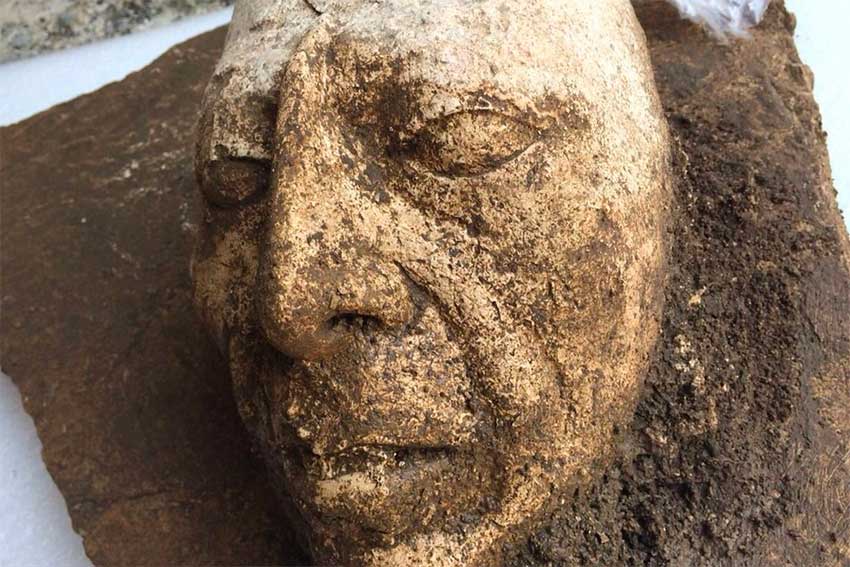
The discovery of Pakal’s jade death mask has also provided invaluable insights into the Maya’s complex understanding of the relationship between the living and the dead. In Maya cosmology, death was not seen as the end of existence, but rather a transformation into a new state of being – one that was intimately connected to the continued well-being and prosperity of the living.
By adorning Pakal’s face with the exquisite jade mask, the Maya were not simply honoring their ruler’s memory, but actively engaging in a ritual that was believed to facilitate his transition into the realm of the divine. The mask, in this sense, served as a tangible representation of the Maya’s belief in the cyclical nature of life and death, and the vital role that the ruler played in maintaining the delicate balance between the physical and spiritual realms.
Ongoing Research and Debates
The discovery of Pakal’s jade death mask has sparked a wealth of ongoing research and scholarly debate, as archaeologists, historians, and anthropologists continue to unravel the mysteries and complexities of this iconic artifact.
One area of active investigation is the mask’s intricate iconography and the insights it provides into the Maya’s sophisticated religious and cultural beliefs. Scholars have devoted countless hours to deciphering the mask’s intricate glyphs and symbols, which may hold the key to a deeper understanding of Pakal’s life, reign, and the rituals and beliefs that shaped his legacy.
Another area of intense focus is the mask’s craftsmanship and the technological prowess of the Maya artisans who created it. The level of precision and attention to detail evident in the mask’s design has led to fascinating discussions about the Maya’s mastery of jade carving, their use of specialized tools and techniques, and the broader implications of their artistic and engineering achievements.
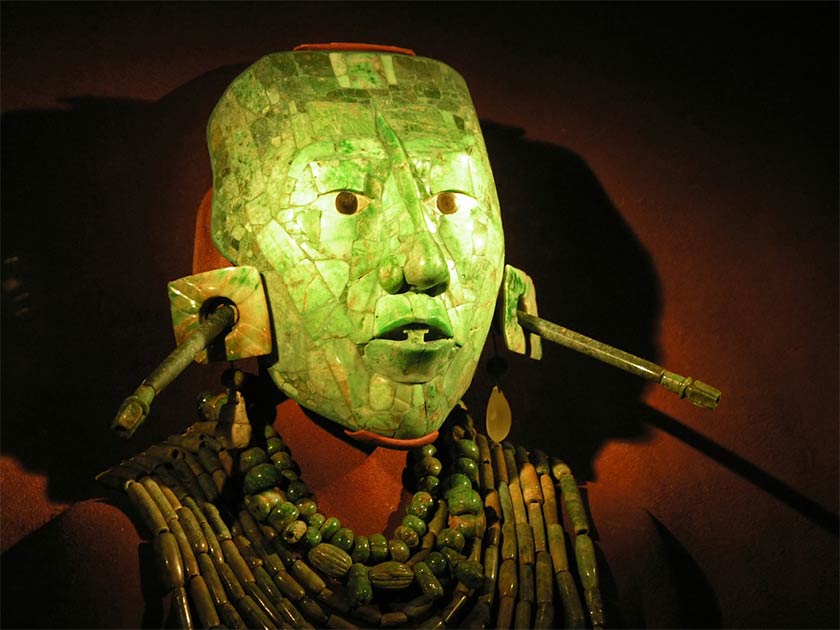
Additionally, the discovery of Pakal’s jade death mask has sparked debates about the role of Maya rulers and the nature of their power and authority within the broader context of Mesoamerican civilization. Some scholars argue that the mask’s elaborate design and the reverence with which it was treated suggest that Pakal was not just a political leader, but a divine intermediary – a figure whose authority was rooted in both earthly and celestial realms.
As the research and scholarly discourse surrounding Pakal’s jade death mask continues to evolve, the artifact remains a captivating and enigmatic symbol of the Maya’s enduring legacy. Its discovery has not only shed light on the life and times of this remarkable ruler, but has also opened up new avenues of exploration into the rich cultural, religious, and artistic tapestry of the Maya civilization as a whole.
Conclusion
The discovery of Pakal the Great’s jade death mask in the Temple of Inscriptions at Palenque has captivated the world and continues to captivate scholars and the public alike. This exquisite funerary artifact is a testament to the sophistication and artistry of the Maya civilization, as well as the profound cultural and religious beliefs that underpinned their worldview.
Through the study of Pakal’s jade death mask, we have gained invaluable insights into the life, reign, and legacy of this legendary Maya ruler. We have learned about the intricate symbolism and iconography that imbued the mask with profound spiritual significance, the technological prowess of Maya artisans, and the complex relationship between the living and the dead in Maya cosmology.
As the research and scholarly discourse surrounding Pakal’s jade death mask continues to evolve, we can expect to uncover even more fascinating insights into the Maya civilization and the enduring legacy of one of its most influential rulers. The mask’s captivating beauty and the mysteries it holds will undoubtedly continue to captivate and inspire scholars, artists, and the public for generations to come.
